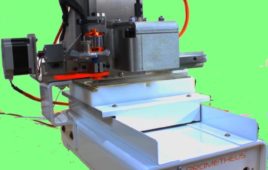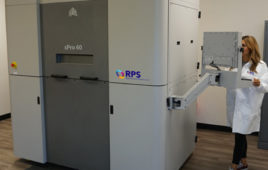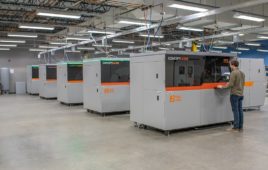In this video, a 3D-printer nozzle narrower than a human hair lays down a specially formulated “ink” layer by layer to build a microbattery’s anode from the ground up. Unlike ink in an office inkjet printer, which comes out as droplets of liquid and wets a piece of paper, these 3D-printer inks are specially formulated to exit the nozzle like toothpaste from a tube, then immediately harden into layers as narrow as those produced by thin-film manufacturing methods. In addition, the inks contain nanoparticles of a lithium metal oxide compound that give the anode the proper electrical properties.
Read: Printing Tiny Batteries
Filed Under: Rapid prototyping




